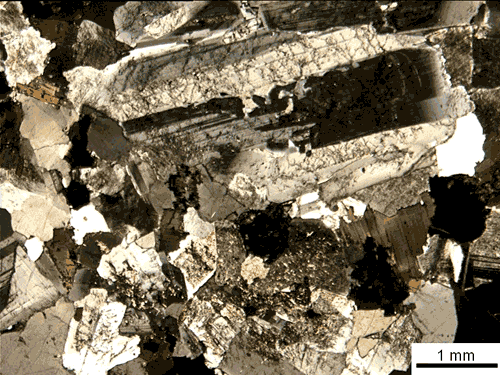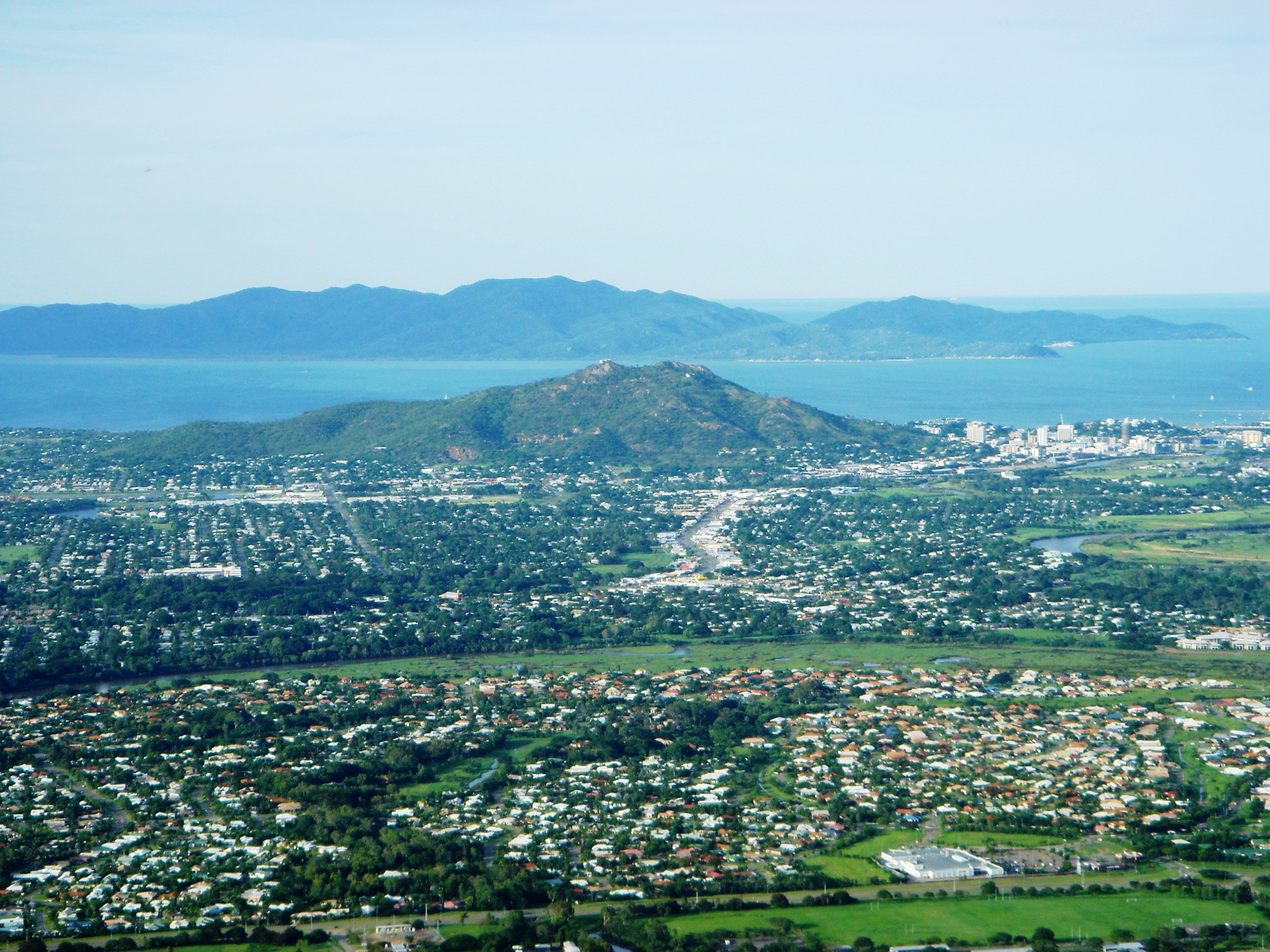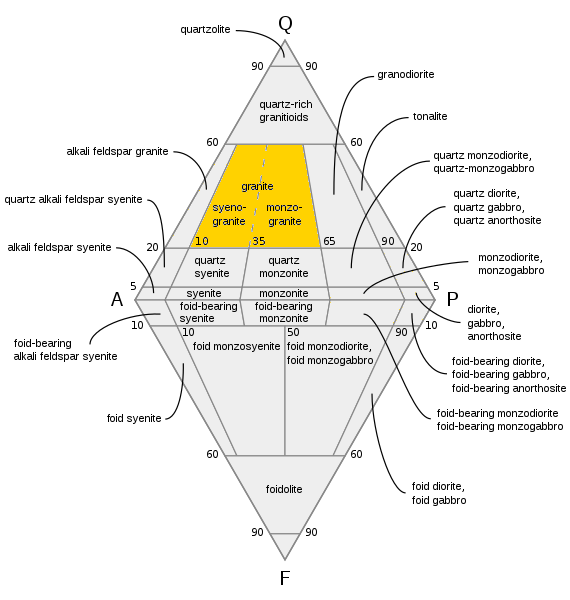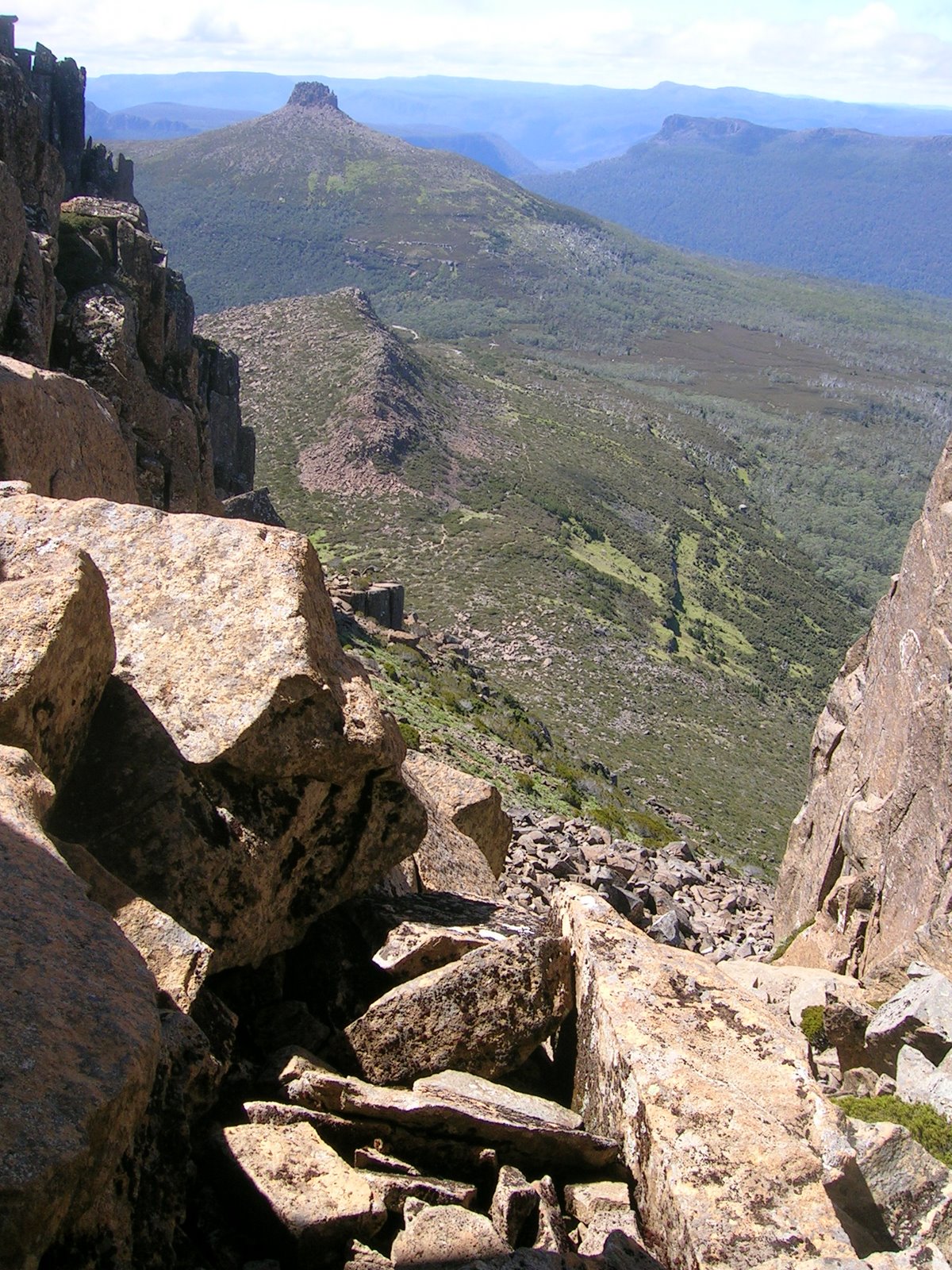|
Leichhardt Range
The Leichhardt Range, part of the Great Dividing Range, is a mountain range located in North Queensland, Australia. The range runs parallel with the coast about west of Mackay and has an average elevation of . It is composed of a series of rugged hills with folded granite and granodiorite. The age of the rocks vary from Ordovician (490 to 434 million years) to Late Carboniferous (325 to 298 million years). These are interspersed with areas of volcanic rhyolite of the Cambrian Period (545 to 490 million years) at the southern edge. The range is named after the explorer Ludwig Leichhardt Friedrich Wilhelm Ludwig Leichhardt (), known as Ludwig Leichhardt, (23 October 1813 – c. 1848) was a German explorer and naturalist, most famous for his exploration of northern and central Australia.Ken Eastwood,'Cold case: Leichhardt's dis .... See also * List of mountains in Queensland References Mountain ranges of Queensland North Queensland {{NorthQueensland-geo-stub ... [...More Info...] [...Related Items...] OR: [Wikipedia] [Google] [Baidu] |
Ludwig Leichhardt
Friedrich Wilhelm Ludwig Leichhardt (), known as Ludwig Leichhardt, (23 October 1813 – c. 1848) was a German explorer and naturalist, most famous for his exploration of northern and central Australia.Ken Eastwood,'Cold case: Leichhardt's disappearance', Australian Geographic, AG Online, accessed online 7 August 2010 Early life Leichhardt was born on 23 October 1813 in the hamlet of Sabrodt near the village of Trebatsch, today part of Tauche, in the Prussian Province of Brandenburg (now within the Federal Republic of Germany). He was the fourth son and sixth of the eight children of Christian Hieronymus Matthias Leichhardt, farmer and royal inspector and his wife Charlotte Sophie, ''née'' Strählow. Between 1831 and 1836 Leichhardt studied philosophy, language, and natural sciences at the Universities of Göttingen and Berlin but never received a university degree. He moved to England in 1837, continued his study of the natural sciences at various places, including the Brit ... [...More Info...] [...Related Items...] OR: [Wikipedia] [Google] [Baidu] |
Granite
Granite () is a coarse-grained ( phaneritic) intrusive igneous rock composed mostly of quartz, alkali feldspar, and plagioclase. It forms from magma with a high content of silica and alkali metal oxides that slowly cools and solidifies underground. It is common in the continental crust of Earth, where it is found in igneous intrusions. These range in size from dikes only a few centimeters across to batholiths exposed over hundreds of square kilometers. Granite is typical of a larger family of ''granitic rocks'', or '' granitoids'', that are composed mostly of coarse-grained quartz and feldspars in varying proportions. These rocks are classified by the relative percentages of quartz, alkali feldspar, and plagioclase (the QAPF classification), with true granite representing granitic rocks rich in quartz and alkali feldspar. Most granitic rocks also contain mica or amphibole minerals, though a few (known as leucogranites) contain almost no dark minerals. Granite is ... [...More Info...] [...Related Items...] OR: [Wikipedia] [Google] [Baidu] |
Ordovician
The Ordovician ( ) is a geologic period and system, the second of six periods of the Paleozoic Era. The Ordovician spans 41.6 million years from the end of the Cambrian Period million years ago (Mya) to the start of the Silurian Period Mya. The Ordovician, named after the Welsh tribe of the Ordovices, was defined by Charles Lapworth in 1879 to resolve a dispute between followers of Adam Sedgwick and Roderick Murchison, who were placing the same rock beds in North Wales in the Cambrian and Silurian systems, respectively. Lapworth recognized that the fossil fauna in the disputed strata were different from those of either the Cambrian or the Silurian systems, and placed them in a system of their own. The Ordovician received international approval in 1960 (forty years after Lapworth's death), when it was adopted as an official period of the Paleozoic Era by the International Geological Congress. Life continued to flourish during the Ordovician as it did in the earlier C ... [...More Info...] [...Related Items...] OR: [Wikipedia] [Google] [Baidu] |
Late Carboniferous
Late may refer to: * LATE, an acronym which could stand for: ** Limbic-predominant age-related TDP-43 encephalopathy, a proposed form of dementia ** Local-authority trading enterprise, a New Zealand business law ** Local average treatment effect, a concept in econometrics Music * ''Late'' (album), a 2000 album by The 77s * Late!, a pseudonym used by Dave Grohl on his '' Pocketwatch'' album * Late (rapper), an underground rapper from Wolverhampton * "Late" (song), a song by Blue Angel * "Late", a song by Kanye West from '' Late Registration'' Other * Late (Tonga), an uninhabited volcanic island southwest of Vavau in the kingdom of Tonga * "Late" (''The Handmaid's Tale''), a television episode * LaTe, Oy Laivateollisuus Ab, a defunct shipbuilding company * Late may refer to a person who is Dead See also * * * '' Lates'', a genus of fish in the lates perch family * Later (other) * Tardiness * Tardiness (scheduling) {{disambig ... [...More Info...] [...Related Items...] OR: [Wikipedia] [Google] [Baidu] |
Queensland
) , nickname = Sunshine State , image_map = Queensland in Australia.svg , map_caption = Location of Queensland in Australia , subdivision_type = Country , subdivision_name = Australia , established_title = Before federation , established_date = Colony of Queensland , established_title2 = Separation from New South Wales , established_date2 = 6 June 1859 , established_title3 = Federation of Australia, Federation , established_date3 = 1 January 1901 , named_for = Queen Victoria , demonym = , capital = Brisbane , largest_city = capital , coordinates = , admin_center_type = Administration , admin_center = Local government areas of Queensland, 77 local government areas , leader_title1 = Monarchy of Australia, Monarch , leader_name1 = Charles III , leader_title2 = Governor of Queensland, Governor , leader_name2 = Jeannette Young , leader_title3 = Premier of Queensland, Premier , leader_name3 = Annastacia Palaszczuk (Australian Labor Party (Queensland Branch), AL ... [...More Info...] [...Related Items...] OR: [Wikipedia] [Google] [Baidu] |
Great Dividing Range
The Great Dividing Range, also known as the East Australian Cordillera or the Eastern Highlands, is a cordillera system in eastern Australia consisting of an expansive collection of mountain ranges, plateaus and rolling hills, that runs roughly parallel to the east coast of Australia and forms the fifth-longest land-based mountain chain in the world, and the longest entirely within a single country. It is mainland Australia's most substantial topographic feature and serves as the definitive watershed for the river systems in eastern Australia, hence the name. The Great Dividing Range stretches more than from Dauan Island in the Torres Strait off the northern tip of Cape York Peninsula, running the entire length of the eastern coastline through Queensland and New South Wales, then turning west across Victoria before finally fading into the Wimmera plains as rolling hills west of the Grampians region. The width of the Range varies from about to over .Shaw, John ... [...More Info...] [...Related Items...] OR: [Wikipedia] [Google] [Baidu] |
Mountain Range
A mountain range or hill range is a series of mountains or hills arranged in a line and connected by high ground. A mountain system or mountain belt is a group of mountain ranges with similarity in form, structure, and alignment that have arisen from the same cause, usually an orogeny. Mountain ranges are formed by a variety of geological processes, but most of the significant ones on Earth are the result of plate tectonics. Mountain ranges are also found on many planetary mass objects in the Solar System and are likely a feature of most terrestrial planets. Mountain ranges are usually segmented by Highland (geography), highlands or mountain passes and valleys. Individual mountains within the same mountain range do not necessarily have the same Structural geology, geologic structure or petrology. They may be a mix of different orogenic expressions and terranes, for example Thrust fault, thrust sheets, Fault-block mountain, uplifted blocks, Fold (geology), fold mountains, and vol ... [...More Info...] [...Related Items...] OR: [Wikipedia] [Google] [Baidu] |
North Queensland
North Queensland or the Northern Region is the northern part of the Australian state of Queensland that lies just south of Far North Queensland. Queensland is a massive state, larger than many countries, and its tropical northern part has been historically remote and undeveloped, resulting in a distinctive regional character and identity. Townsville is the largest urban centre in North Queensland, leading it to be regarded as an unofficial capital. The region has a population of 231,628 and covers . Geography There is no official boundary that separates North Queensland from the rest of the state. Unofficially it is usually considered to have a southern border beginning south of the Mackay Region southern boundary, but historically it has been as far south as Rockhampton. To the north is the Far North Queensland region, centred on Cairns and out west is the Gulf Country. A coastal region centred on its largest settlement is the city of Townsville. The city is the locat ... [...More Info...] [...Related Items...] OR: [Wikipedia] [Google] [Baidu] |
Mackay, Queensland
} Mackay () is a city in the Mackay Region on the eastern or Coral Sea coast of Queensland, Australia. It is located about north of Brisbane, on the Pioneer River. Mackay is described as being in either Central Queensland or North Queensland, as these Regions of Queensland, regions are not precisely defined. More generally, the area is known as the Mackay–Whitsunday Islands, Whitsunday Region. Mackay is nicknamed the sugar capital of Australia because its region produces more than a third of Australia's sugar. Name The city was named after John Mackay (Australian pioneer), John Mackay. In 1860, he was the leader of an expedition into the Pioneer Valley. Initially Mackay proposed to name the river Mackay River after his father George Mackay. Thomas Henry Fitzgerald surveyed the township and proposed it was called Alexandra after Alexandra of Denmark, Princess Alexandra of Denmark, who married Prince Edward (later Edward VII, King Edward VII). However, in 1862 the river was re ... [...More Info...] [...Related Items...] OR: [Wikipedia] [Google] [Baidu] |
Granite
Granite () is a coarse-grained ( phaneritic) intrusive igneous rock composed mostly of quartz, alkali feldspar, and plagioclase. It forms from magma with a high content of silica and alkali metal oxides that slowly cools and solidifies underground. It is common in the continental crust of Earth, where it is found in igneous intrusions. These range in size from dikes only a few centimeters across to batholiths exposed over hundreds of square kilometers. Granite is typical of a larger family of ''granitic rocks'', or '' granitoids'', that are composed mostly of coarse-grained quartz and feldspars in varying proportions. These rocks are classified by the relative percentages of quartz, alkali feldspar, and plagioclase (the QAPF classification), with true granite representing granitic rocks rich in quartz and alkali feldspar. Most granitic rocks also contain mica or amphibole minerals, though a few (known as leucogranites) contain almost no dark minerals. Granite is ... [...More Info...] [...Related Items...] OR: [Wikipedia] [Google] [Baidu] |
Rhyolite
Rhyolite ( ) is the most silica-rich of volcanic rocks. It is generally glassy or fine-grained ( aphanitic) in texture, but may be porphyritic, containing larger mineral crystals ( phenocrysts) in an otherwise fine-grained groundmass. The mineral assemblage is predominantly quartz, sanidine, and plagioclase. It is the extrusive equivalent to granite. Rhyolitic magma is extremely viscous, due to its high silica content. This favors explosive eruptions over effusive eruptions, so this type of magma is more often erupted as pyroclastic rock than as lava flows. Rhyolitic ash-flow tuffs are among the most voluminous of continental igneous rock formations. Rhyolitic tuff has been extensively used for construction. Obsidian, which is rhyolitic volcanic glass, has been used for tools from prehistoric times to the present day because it can be shaped to an extremely sharp edge. Rhyolitic pumice finds use as an abrasive, in concrete, and as a soil amendment. Description R ... [...More Info...] [...Related Items...] OR: [Wikipedia] [Google] [Baidu] |
List Of Mountains In Australia
This is a list of mountains in Australia. Highest points by state and territory List of mountains in Australia by topographic prominence This is a list of the top 50 mountains in Australia ranked by topographic prominence. Most of these peaks are the highest point in their areas. Australian Capital Territory The following is a list of mountains and prominent hills in the Australian Capital Territory in order, from the highest peak to the lowest peak, for those mountains and hills with an elevation above : New South Wales Queensland South Australia Tasmania Victoria Western Australia * Carnarvon Range * Mount Augustus (1105m) * Mount Beadell * Darling Range ** Mount Dale ** Mount Cooke * Hamersley Range ** Mount Meharry (at 1,249 metres above sea level, the highest peak in Western Australia) ** Mount Bruce (1,221 m; the second highest peak in WA) ** Mount Nameless/Jarndunmunha 1,115 m * Wunaamin Miliwundi Ranges, formerly King Leopold R ... [...More Info...] [...Related Items...] OR: [Wikipedia] [Google] [Baidu] |








